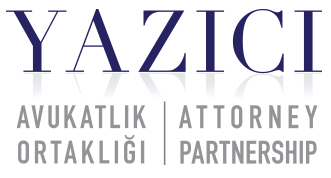Markets in Crypto Assets
“MiCA”
-
Introduction
The use of crypto-assets has grown exponentially over the past couple of years for retail investors, as well as businesses to the extent that the total market cap of crypto-assets has reached over 800 billion1, and it is expected that the number of global crypto owners to reach 1 billion by the end of 20222. Despite the ever-growing interest in crypto-assets, lack of certainty on the legal aspect of crypto-assets remains for most of the countries. To address the legal uncertainty and to make the advantages of digital finance available to European customers and business by building a common approach among Member States on crypto-assets, legislators in the European Union have prepared the proposal of Regulation on Markets in Crypto-assets (“MiCA” or “Regulation”) in line with a Europe fit for the digital age priority of the European Commission3.
MiCA, was approved by the Committee on Economic and Monetary Affairs on October 10, 2022, and is expected to enter into force in 2024. When adopted, MiCA will be binding and directly applicable for all Member States. This article will cover notable aspects of the Regulation briefly.
-
Scope and Objective of MiCA
MiCA is applicable to crypto-asset service providers and issuers in the European Union. In other words, all crypto-assets service providers and issuers will be subject to this Regulation when adopted. MiCA establishes uniform requirements for transparency and disclosure on issuance, operation, organization and governance of crypto-asset service providers, as well as establishing consumer protection rules and measures to prevent market abuse. It has four general and related objectives. The first objective of the MiCA is to resolve legal uncertainty on crypto-assets by developing a sound legal framework. The other stated objectives are to promote innovation by supporting the use of the distributed ledger technology (DLT) and development of crypto-assets, to introduce customer and investor protection against the risks that some crypto-assets may present, and finally to ensure financial stability in crypto-assets including “stablecoins”. MiCA sets forth three main categories of crypto-assets: utility tokens, asset-referenced tokens, e-money tokens not covered by the existing legal framework. On the other hand, non-fungible tokens (NFTs), decentralized finance (DeFi), decentralized autonomous organizations (DAO) and proof of work (PoW) are excluded from MiCA. Although NFTs are excluded from the Regulation, it is set out that there is no obligation to prepare and submit white papers for NFTs.
-
Definitions
MiCA introduces 28 definitions related to crypto-assets. Some of them listed as follows:
-
“Distributed ledger technology or DLT” means a type of technology that support the distributed recording of encrypted data;
-
“Crypto-asset” means a digital representation of value or rights which may be transferred and stored electronically, using distributed ledger technology or similar technology;
-
“Asset-referenced token” means a type of crypto-asset that purports to maintain a stable value by referring to the value of several fiat currencies that are legal tender, one or several commodities or one or several crypto-assets, or a combination of such assets;
-
“Electronic money token or e-money token” means a type of crypto-asset the main purpose of which is to be used as a means of exchange and that purports to maintain a stable value by referring to the value of a fiat currency that is legal tender;
-
“Utility token” means a type of crypto-asset which is intended to provide digital access to a good or service, available on DLT, and is only accepted by the issuer of that token;
-
“Issuer of crypto-assets” means a legal person who offers to the public any type of crypto-assets or seeks the admission of such crypto-assets to a trading platform for crypto-assets;
-
“Crypto-asset service provider or CASP” means any person whose occupation or business is the provision of one or more crypto-asset services to third parties on a professional basis; and
-
“Crypto-asset service” means any of the services and activities listed below relating to any crypto-asset:
-
the custody and administration of crypto-assets on behalf of third parties;
-
the operation of a trading platform for crypto-assets;
-
the exchange of crypto-assets for fiat currency that is legal tender;
-
the exchange of crypto-assets for other crypto-assets;
-
the execution of orders for crypto-assets on behalf of third parties;
-
placing of crypto-assets;
-
the reception and transmission of orders for crypto-assets on behalf of third parties
-
providing advice on crypto-assets.
-
-
Crypto-Assets Other Than Asset-Referenced Tokens or E-Money Tokens MiCA’s provisions regarding utility tokens provide a less onerous legal framework compared to asset-referenced tokens and e-money tokens as their offering does not require permission from any competent authority. Article 4 of the Regulation provides that only legal entities are allowed to issue such crypto-assets. Main principle in offering crypto-assets, that are not asset-referenced tokens or e-money tokens, to public is to draft and publish a white paper in a fair, clear and not misleading manner. Mandatory elements to be included in the white paper that should be publicly accessible on the issuer’s website are as follows in Article 5:
-
a detailed description of the issuer and a presentation of the main participants involved in the project’s design and development;
-
a detailed description of the issuer’s project, the type of crypto-asset that will be offered to the public or for which admission to trading is sought, the reasons why the crypto-assets will be offered to the public or why admission to trading is sought and the planned use of the fiat currency or other crypto-assets collected via the offer to the public;
-
a detailed description of the characteristics of the offer to the public, in particular the number of crypto-assets that will be issued or for which admission to trading is sought, the issue price of the crypto-assets and the subscription terms and conditions;
-
detailed description of the rights and obligations attached to the crypto-assets and the procedures and conditions for exercising those rights;
-
information on the underlying technology and standards applied by the issuer of the crypto-assets allowing for the holding, storing and transfer of those crypto-assets;
-
a detailed description of the risks relating to the issuer of the crypto-assets, the crypto-assets, the offer to the public of the crypto-asset and the implementation of the project
-
the disclosure items specified in Annex I of the Regulation.
In addition to the aforementioned mandatory content, crypto-assets’ white papers must include unambiguous statements that no competent authority within European Union or member state has reviewed or approved such white paper; that crypto-assets may lose their value in part or in full; that crypto-assets may not always be transferable; that crypto-assets may not be liquid; that utility tokens (where the offer to the public concerns utility tokens) may not be exchangeable against the good or service promised in the white paper, especially in case of failure or discontinuation of the project. However, in certain circumstances MiCA allows offerings of crypto-assets without preparing and publishing a whitepaper. Under Article 4/2 of the Regulation, below-stated offerings are exempt from whitepaper-related obligations:
-
the crypto-assets are offered for free;
-
the crypto-assets are automatically created through mining as a reward for the maintenance of the DLT or the validation of transactions;
-
the crypto-assets are unique and not fungible with other crypto-assets;
-
the crypto-assets are offered to fewer than 150 natural or legal persons per member state where such persons are acting on their own account;
-
over a period of 12 months, the total consideration of an offer to the public of crypto-assets in the European Union does not exceed EUR 1,000,000 or the equivalent amount in another currency or in crypto-assets;
-
if the offer to the public of crypto-assets is solely addressed to qualified investors and the crypto-assets can only be held by such qualified investors.
In addition to the rules concerning issuance of crypto-assets, rights of consumers in crypto-asset issuances have also been clarified within the scope of MiCA. Pursuant to Article 14 of the Regulation, if the holders of crypto assets prove that information contained in the white paper is misleading, inaccurate or incomplete, or that important information that may affect the purchase, sale or exchange decision of consumers is concealed, then the customers may claim damages from the crypto-assets issuer, and any limitation of liability will be deprived of legal effect. Additionally, as per Article 12 of the MiCA, consumers will have the right to withdraw their agreement to purchase crypto-assets without incurring any cost and without giving any reasons within 14 days starting from the day of purchase.
-
-
-
Asset-Referenced Tokens
Regulation introduced stricter requirements for asset-referenced tokens taking into account the risks they may present. Pursuant to Article 15 of MiCA, issuers authorised by the competent authority of their home member state will be allowed to issue asset-referenced tokens. In order to be authorised, an issuer of asset-referenced tokens must submit an application to the competent authority of its home member state containing detailed information on the applicant issuer and the project including but not limited to articles of association, business model, legal opinion and white paper. Home-state competent authority will approve or reject offering of the asset-referenced token by consulting European Banking Authority, European Securities and Markets Authority and European Central Bank. However, in following circumstances, approval of the competent authority is not required:
-
over a period of 12 months, calculated at the end of each calendar day, the average outstanding amount of asset-referenced tokens does not exceed EUR 5,000,000 or the equivalent amount in another currency;
-
the offer to the public of the asset-referenced tokens is solely addressed to qualified investors and the asset-referenced tokens can only be held by such qualified investors.
Issuers of asset-referenced tokens must fulfil stringent requirements including but not limited to holding reserved assets, implementing complaint-handling procedure, having conflict of interest policies and governance arrangements. Asset-referenced tokens may be classified as significant asset-referenced tokens by European Banking Authority on the basis of the following criteria under Article 39 of the MiCA:
-
Size of the customer base,
-
Value of the asset-referenced tokens,
-
Number and value of transactions,
-
Size of the reserve of assets,
-
Cross-border activities of the issuer including number of Member States where the asset-referenced tokens are used, and
-
Interconnectedness with the financial system.
The Commission will be empowered to adopt secondary legislation to further specify the aforementioned criteria. If asset-referenced tokens are deemed significant, the supervisory responsibilities on issuers of such asset-referenced tokens will be transferred to the European Banking Authority, and more stringent requirements, including stronger capital requirements, will be in place.
-
-
Electronic Money Tokens
Electronic money token or e-money token issuers are required to be authorised as a credit institution or an electronic money institution, and comply with the applicable sectoral legislation, together with providing a white paper to competent authority of their home member state in accordance with the Article 43 of the MiCA. The white paper approval mechanism introduced for asset-referenced tokens is not applicable for e-money tokens, yet e-money token white papers should be publicly accessible. However, e-money tokens can be issued without being subject to aforementioned requirement if:
-
e-money tokens that are marketed, distributed and held by qualified investors and can only be held by qualified investors;
-
the average outstanding amount of e-money tokens does not exceed EUR 5,000,000 or the corresponding equivalent in another currency, over a period of 12 months, calculated at the end of each calendar day.
Similar to asset-referenced tokens, e-money tokens meeting certain criteria that European Banking Authority will specify, will be classified as significant e-money tokens and will be subject to more stringent regulation.
-
-
Crypto-Asset Service Providers
Crypto-asset service providers (“CASP”) must have a registered office in a member state and be authorized by the relevant national competent authority in order to provide services stated in Definitions section of the Regulation, pursuant to its Article 53. Authorization granted in a member state will be valid for the entire European Union similar to “passport” mechanism known from other European markets legislation. CASPs will be required to comply with general rules such as the obligation to act honestly, fairly and professionally in accordance with the best interests of their clients and prospective clients; prudential requirements; organisational requirements; disclosure and transparency; safekeeping of clients’ crypto-assets and funds; prevention, identification, management and disclosure of conflicts of interest; complaint-handling procedure; and outsourcing; as well as specific rules on custody and management of crypto assets depending on the type of service provided.
-
Conclusion
With the introduction of MiCA, legal framework for crypto-assets in a broader sense has been drawn and the legitimacy of crypto-assets has been recognized at the European Union level. MiCA will protect the customers and the market by imposing strict rules and procedures for crypto-assets issuers and crypto-assets service providers. It may be expected in near-future that MiCA may have a similar impact on legal framework of crypto-assets, as GDPR had on the protection of personal data on a global scale. Considering challenging requirements that MiCA presents for crypto-assets issuers and crypto-assets service providers, it is advisable to take steps for compliance with the Regulation as soon as possible.
January 2023
References
CoinMarketCap, accessed 30 November 2022, https://coinmarketcap.com/charts/
Crypto.com, 20 January 2022, accessed 30 November 2022 https://assets.ctfassets.net/hfgyig42jimx/5i8TeN1QYJDjn82pSuZB5S/85c7c9393f3ee67e456ec780f9bf11e3/Cryptodotcom_Crypto_Market_Sizing_Jan2022.pdf
Proposal for a Regulation Of The European Parliament and Of The Council on Markets in Crypto-assets, and amending Directive (EU) 2019/1937
- [1]CoinMarketCap, accessed 30 November 2022, https://coinmarketcap.com/charts/
- [2]Crypto.com, 20 January 2022, accessed 30 November 2022 https://assets.ctfassets.net/hfgyig42jimx/5i8TeN1QYJDjn82pSuZB5S/85c7c9393f3ee67e456ec780f9bf11e3/Cryptodotcom_Crypto_Market_Sizing_Jan2022.pdf
- [3]Proposal for a Regulation Of The European Parliament and Of The Council on Markets in Crypto-assets, and amending Directive (EU) 2019/1937, 2020/0265 (COD)
İlgili Kişiler
Bu makale, makalenin yazım tarihi itibarıyla yürürlükte olan mevzuat dikkate alınarak Yazıcı Avukatlık Ortaklığı tarafından hazırlanmıştır. Her bir olaydaki maddi vakalar ve olay özellikleri ile bunların uygulama ve sonuçları farklı olacağından, bu makale yalnızca bilgilendirme amaçlı olarak hazırlanmış olup, bir hukuki görüş veya öneri teşkil etmez ve bu şekilde yorumlanamaz.



